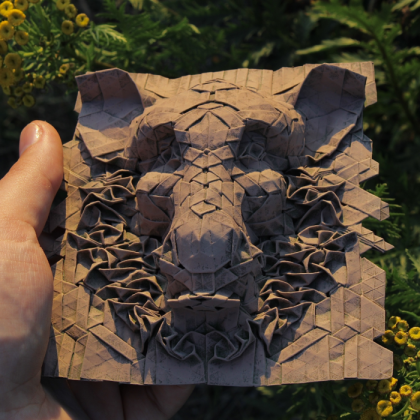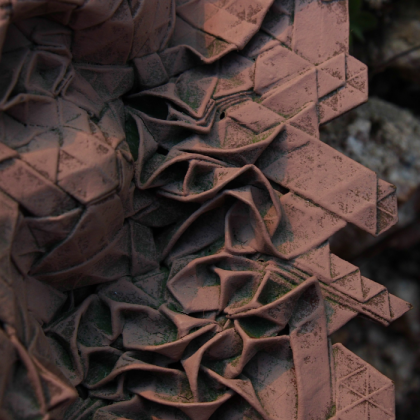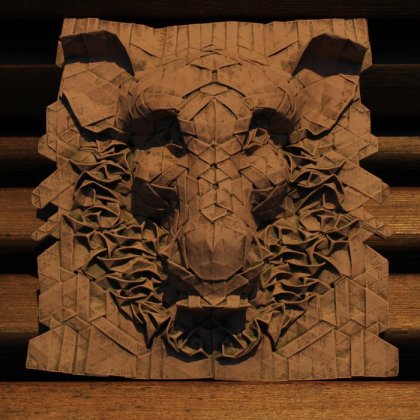Origami tessellations are mostly used to design abstract mosaics - that's not a secret. And creating 3-dimensional sculptures also isn't something new today: we all know famous works by Joel Cooper. But building 3-dimensional animal sculptures - this is something quite unique, conceptually unusual. Maybe we all know how to fold eyes, a nose, or lips, but how about ears, a snout, or tusks? How about putting a very long and complex animal face in one single plane? That's why this model is something new, something outside typical tessellations.
But not only technique makes a model an art object. The idea, the shape itself, is very important. Here I made not just a pig face. I made a real wild boar, Spirit of the Forest, inspired by Hayao Miyazaki's universes. The sculpture is long, has small eyes, a big snout, and sharp tusks (and, ofcourse, wide fur around the face) - and it all makes the image unique and extraordinary.
One of the other distinct features of the model is that this is non-periodic tessellation: each molecule (ears, eyes, snout, etc.) is unique and connected with the other by using a powerful mathematical instrument. I'm writing a book about it and calling it "Indeterminacy Theory of Origami Tessellations" - but that's another story.
But not only technique makes a model an art object. The idea, the shape itself, is very important. Here I made not just a pig face. I made a real wild boar, Spirit of the Forest, inspired by Hayao Miyazaki's universes. The sculpture is long, has small eyes, a big snout, and sharp tusks (and, ofcourse, wide fur around the face) - and it all makes the image unique and extraordinary.
One of the other distinct features of the model is that this is non-periodic tessellation: each molecule (ears, eyes, snout, etc.) is unique and connected with the other by using a powerful mathematical instrument. I'm writing a book about it and calling it "Indeterminacy Theory of Origami Tessellations" - but that's another story.





